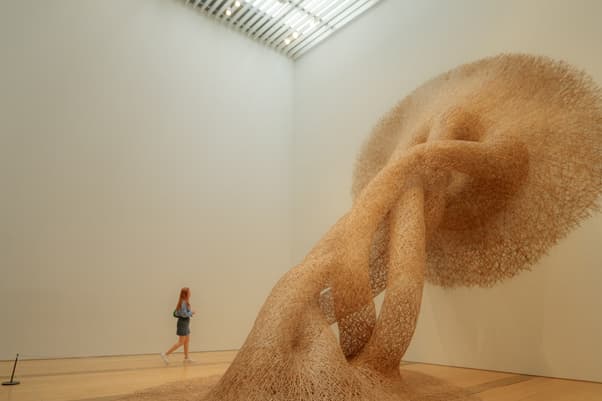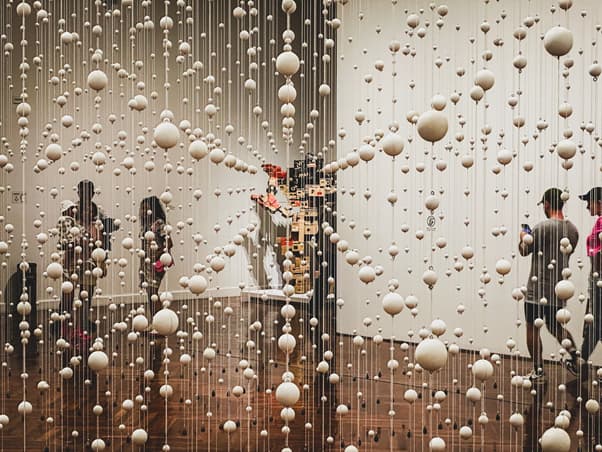Walk into a traditional museum and you’re likely to see signs that say: “Do Not Touch.” But increasingly, that message is shifting. Across the world, museums and galleries are embracing a more tactile, immersive philosophy—one that invites visitors not just to view the art, but to experience it directly. Interactive exhibits are challenging conventional norms, redefining the relationship between art and audience, and making the museum experience more inclusive, memorable, and alive.
Breaking the Barrier Between Artist and Audience
For centuries, art was something to be observed from a respectful distance. The canvas, the pedestal, and the rope barrier were as much part of the experience as the artwork itself. But the rise of experiential culture has flipped this script. Visitors no longer want to simply observe—they want to participate.
Interactive art closes the distance. By inviting the audience to become co-creators or contributors, these exhibits offer a different kind of engagement—more emotional, more personal, and often more playful. In this context, touching, moving, reacting, or even altering the artwork becomes not only acceptable, but integral.
Some artists even create installations that evolve with audience input over time, blurring the lines between creator and observer. This dynamic interaction often leads to new interpretations and meanings, making each visit a unique and evolving encounter.
Technology as a Creative Partner
One of the key forces behind the rise of interactive exhibitions is technology. Touchscreens, motion sensors, augmented reality (AR), and even artificial intelligence are turning passive exhibits into dynamic encounters. Visitors can step into immersive light rooms, whisper into data-responsive sound installations, or even create digital art on the fly.
Institutions like teamLab in Tokyo or ARTECHOUSE in Washington, D.C. are global pioneers in this space, building entire environments that react to your presence. You don’t just look at the art—you move through it, affect it, and sometimes even become part of it. The result is not only entertainment, but a deeper cognitive and sensory connection.
Some museums are even integrating biometric feedback—where your heartbeat, voice, or skin temperature alters the visuals around you. This intimate connection between human and machine adds an emotional depth to the experience, blurring the boundary between viewer and artwork in ways never seen before.
Why Interaction Matters

Interactive exhibits don’t just appeal to our senses—they also serve broader educational and emotional purposes. By making art accessible through action, they:
- Encourage deeper learning through direct experience
- Make museums more inclusive for children and people with disabilities
- Turn passive viewers into active participants
- Foster memory and emotional response through physical engagement
These benefits are especially significant in an age when attention is fragmented and digital fatigue is common. Interactive art provides a space where people reconnect—with ideas, with emotions, and with each other.
From Playful to Profound
Not all interactive exhibits are built around high-tech tools. Many use analog methods to powerful effect. Consider exhibits where visitors contribute to a collective canvas, write anonymous thoughts on walls, or rearrange elements within a room. These low-tech, high-touch experiences bring a communal and human element to the space.
In other cases, the interactivity can be quiet, even meditative. A sand garden you can rake into patterns. A wall of wind chimes activated by movement. A mirror room that reflects your every motion. These experiences remind us that interaction doesn’t always need to be loud to be transformative.
Interactive art also provides a powerful means of storytelling. Exhibits that invite people to share their voices or record personal memories can serve as platforms for social commentary, empathy-building, and connection. In these settings, interactivity becomes a form of dialogue between people who may never meet but are united through shared participation.
Designing for Engagement
Behind every successful interactive exhibit is thoughtful design. Curators and artists must consider how visitors of different ages, backgrounds, and abilities will engage with the work. Materials need to be durable. Signage needs to be clear. The experience must feel intuitive, yet surprising.
Designing for interactivity also means anticipating human curiosity and behavior. What happens if someone pushes too hard? What if they don’t engage at all? Creating truly interactive art is not just about technology—it’s about empathy.
Museums are increasingly hiring interdisciplinary teams—blending curators, designers, technologists, educators, and even psychologists—to ensure the experiences are both accessible and meaningful.
This collaborative process often results in exhibitions that go beyond art and touch on fields like science, health, and history. In doing so, interactive exhibits become not just artistic showcases, but hubs of innovation and cross-disciplinary learning.
The Future of Touch-Driven Art
As the art world continues to evolve, the rise of interactive exhibits signals a broader cultural shift. We no longer want to be told what to feel—we want to feel it for ourselves. We want to leave fingerprints on the world, and be moved in return.
Interactive art is more than a trend; it’s a rethinking of what art can be. It’s physical, emotional, participatory, and deeply human. In breaking the barrier between object and observer, it reclaims the museum as a space of connection—not separation.
And as technologies like virtual reality and haptic feedback continue to improve, the potential for deeper, more immersive engagement is only growing. These innovations will allow artists to craft environments where viewers don’t just enter a scene—they feel it, shape it, and even become part of its narrative.
The next time you walk into an exhibit and see the words “Please Touch,” remember—you’re not just allowed to engage. You’re invited. In a world craving meaningful interaction, interactive art is offering one of the most powerful invitations of all.
